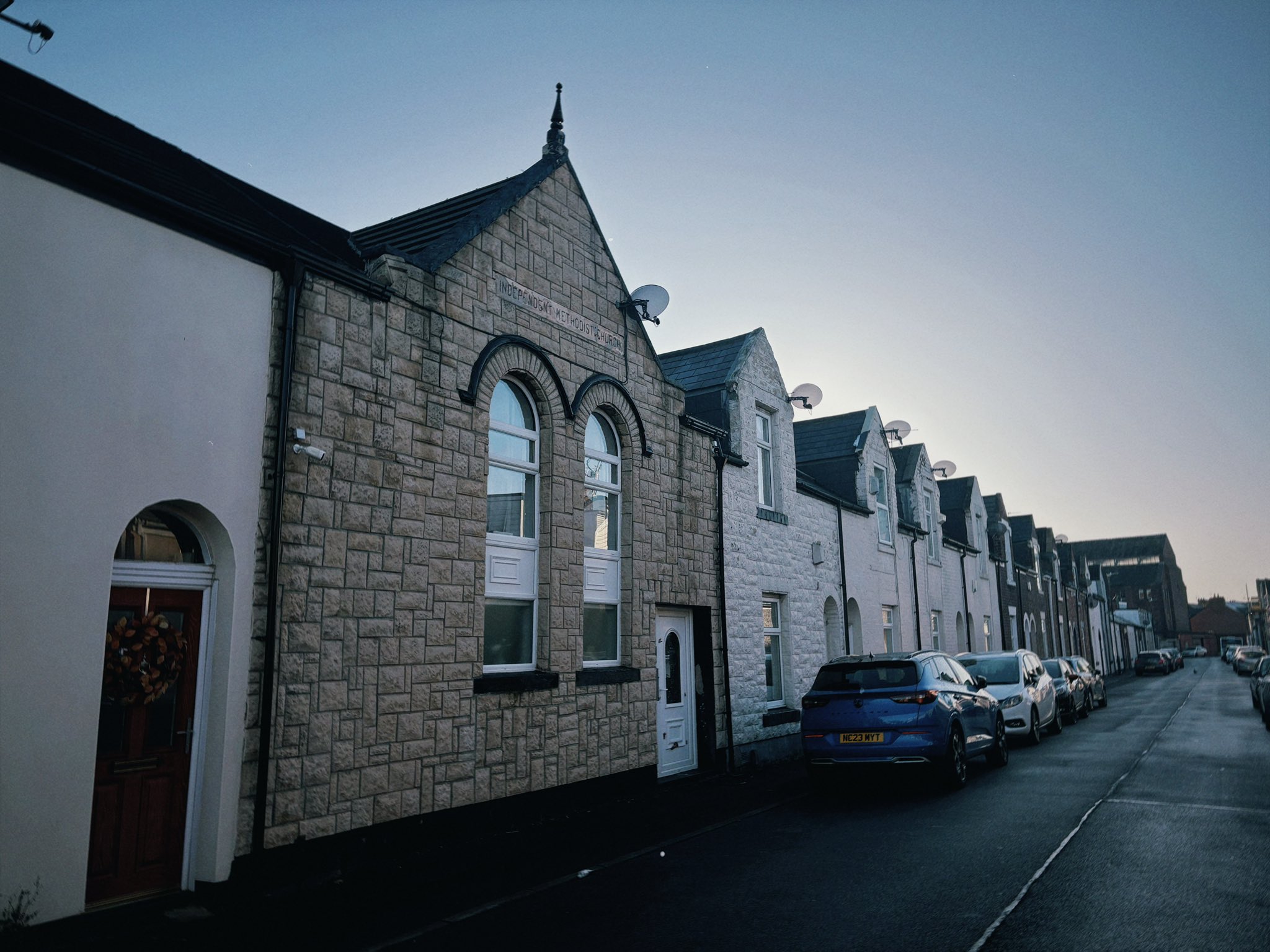
Sunderland
Warwick Street Chapel
Last Updated:
30 Oct 2025
Sunderland
This is a
Chapel, Place of Worship
54.918454, -1.385140
Founded in
Current status is
Extant
Designer (if known):

Now a private dwelling
One of my most interesting ecclesiastical finds in recent months is this lovely converted chapel - nestled within a Sunderland terraced row.
Let’s focus our perspective on 19th century Sunderland. This place was an absolute boomtown, with plots of land fast turning from green to grey because of the sheer demand for housing. Folk from across the islands (and the continent even) settled on the east coast thanks to the abundance of jobs down the pit or in the shipyards. It’s a tale as old as time in these parts.
Social infrastructure struggled to keep up at first, and these grassroots places of worship were required when funds were more limited. This was especially the case for the more marginal congregations like the Independent Methodist circuit. This particular example is absolutely an example of one of these houses which were used for worship, and then converted as a full on chapel.
The property was built around the 1870s, and made use as a chapel from pretty much the same time. It was originally the Sunderland Christian Lay Church, founded in 1881 after first worshipping in the local workmen’s hall. It was rented for the first 14 years, but the decision was made to buy it in 1895. Presumably, from there the frontage was outfitted with these lovely thick arched windows and tiny little flèche type feature on the top.
It remained in use all the way until 2010, and a couple years later reverted as a private dwelling. As far as I’m aware though there are still original features inside. The neighbouring property on the left was also purchased and converted into a Methodist schoolroom.
Listing Description (if available)


Starting from the newer map in 1955, we see the change in the space of half a century going back to 1897. The chapel is extant in both, but of course the biggest change we see is the extinction of the Newcastle Road football ground. By the time of publishing, the ground would have a year left in it before Sunderland moved to Roker Park. The site was vacant for a while then promptly turned into housing.
You'll also notice the Stadium of Light Metro Station and car park is a large cluster of railway sidings for the multiple industries adjoining - cement, bricks, hemp ropes, saw mills etc.

A half century prior to this in 1885, Monkwearmouth was pretty unrecognisable. Our chapel lay next to the single tramway, which diverged from the main line and followed Newcastle Road up to Fulwell Quarry. This was likely a quicker and more accessible route to Monkwearmouth Station for goods exchange. There's not really anything left from this period apart from All Saints Church in this shot, though the Sunderland terrace on Southwick Row may well be the original.

Warwick Street chapel after the frontage refacing from a few decades ago. Taken in October 2025
